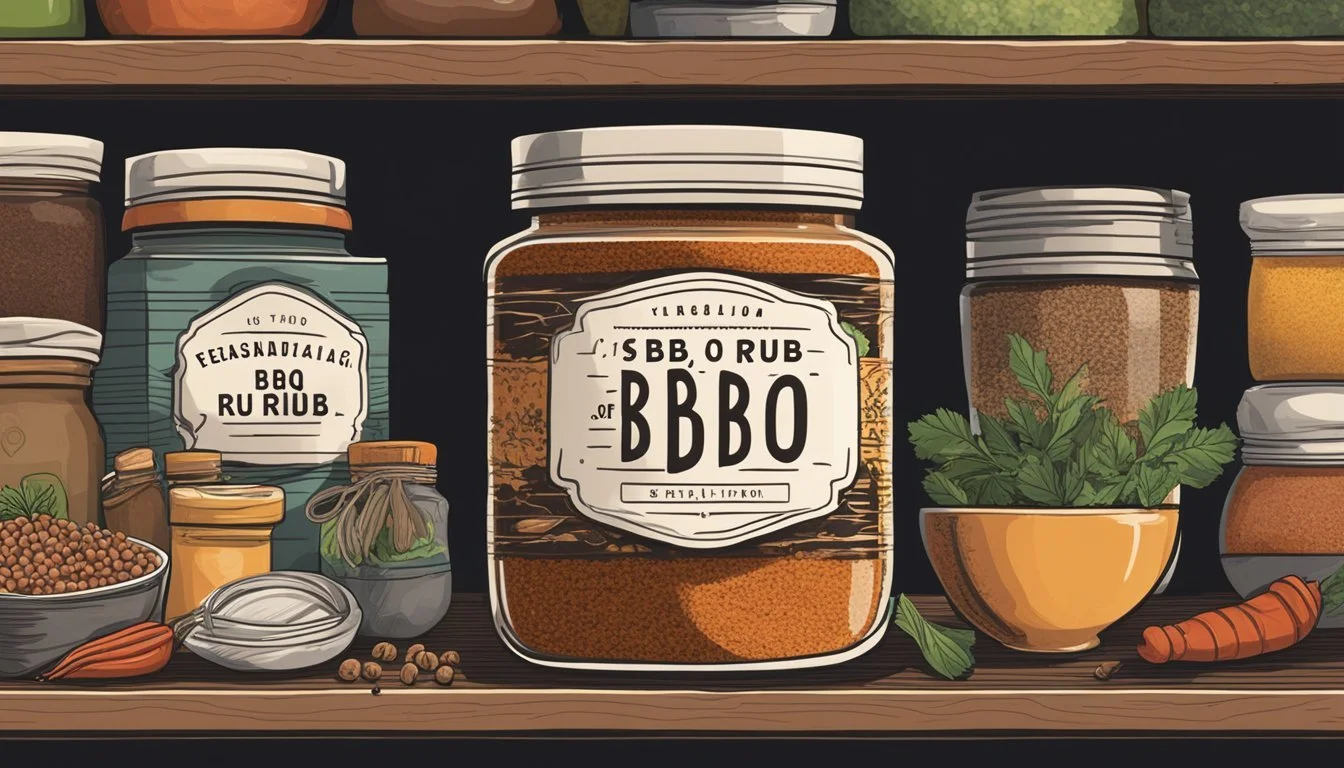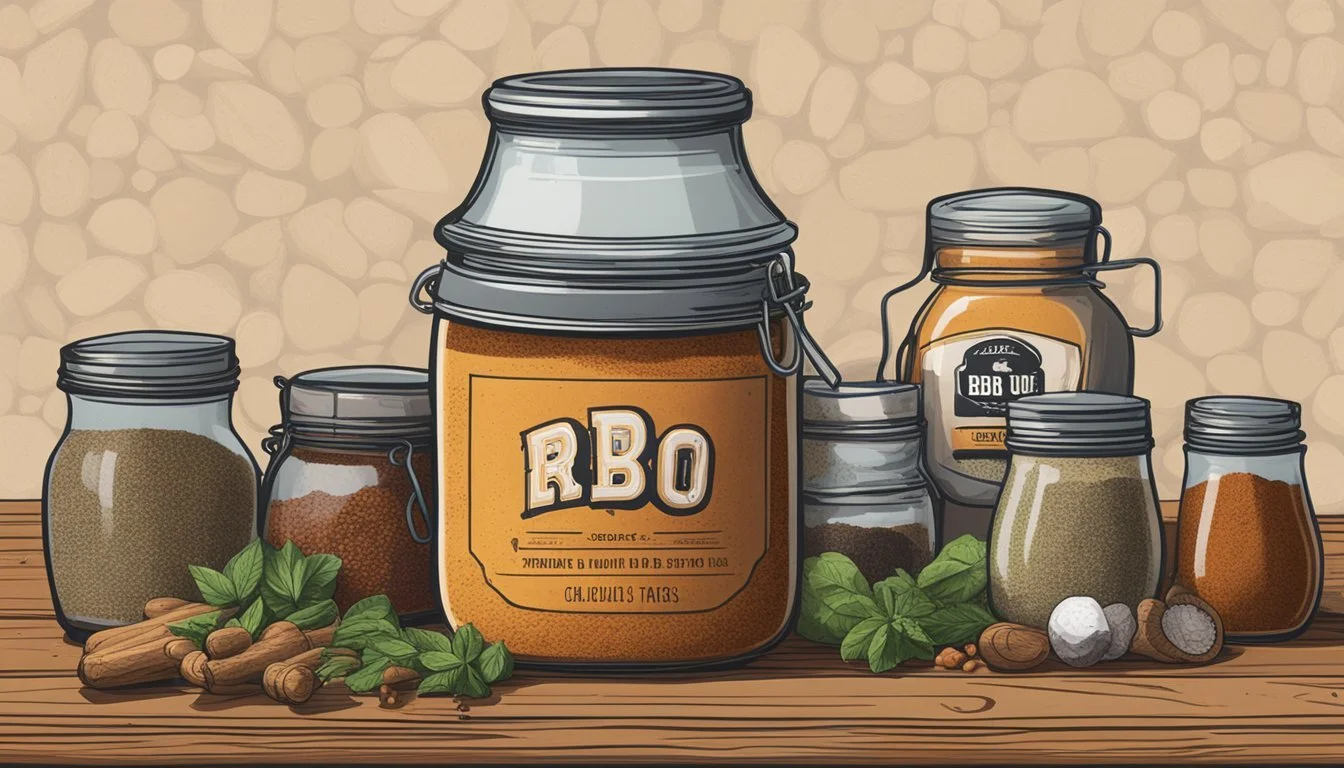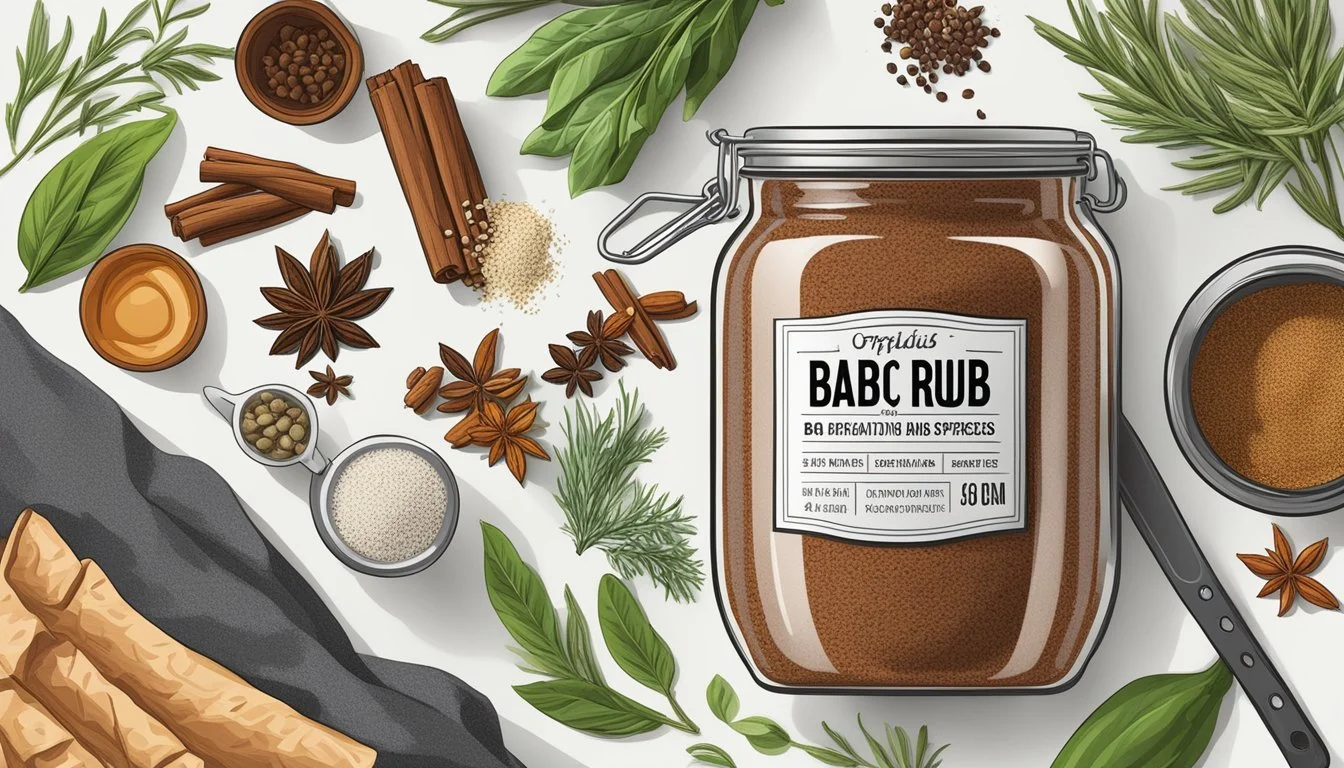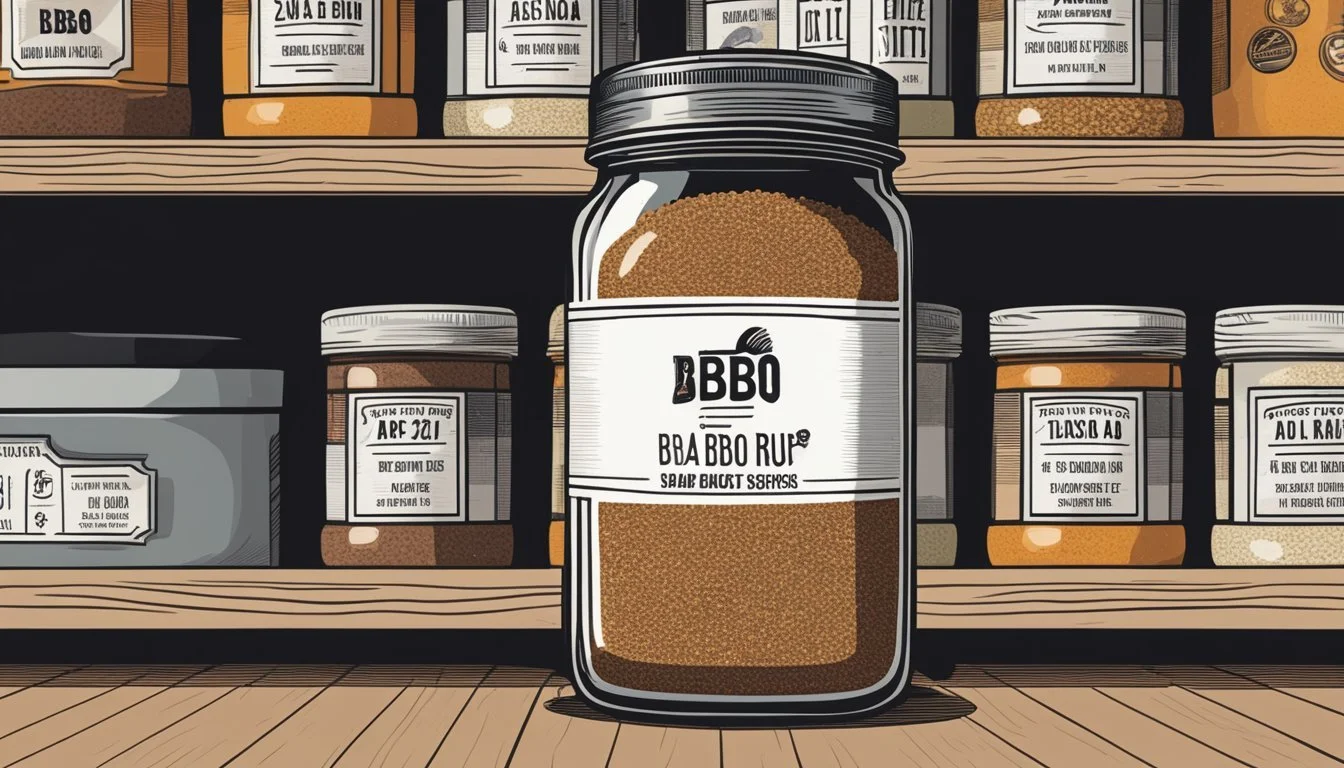Does BBQ Rub Expire?
Understanding Shelf Life and Storage
Barbecue enthusiasts often wonder about the longevity of their cherished BBQ rubs. A well-stored dry BBQ rub can last up to six months while maintaining peak flavor. For maximum freshness, it's essential to keep the rub in an airtight container and store it in a cool, dark place away from moisture, heat, and direct sunlight.
The quality of BBQ rubs doesn't merely degrade overnight. Rather, over time, the spices lose their potency and flavor intensity if not stored properly. While they usually don't spoil or rot, they can become stale and less effective in enhancing your grilled meats.
Knowing how to store your BBQ rubs properly ensures that each grilling session is as flavorful as the last. By following simple storage tips and understanding the shelf life of different spices, you can keep your BBQ rub collection fresh and ready for use whenever inspiration strikes.
Understanding BBQ Rubs and Their Components
BBQ rubs are a blend of various spices, herbs, and other ingredients that enhance the flavor of meats. These rubs can be carefully crafted to create distinct taste profiles when applied to different types of protein.
The Composition of BBQ Rubs
BBQ rubs typically consist of a mix of spices, herbs, salts, and sugars. Common spices include paprika, cayenne pepper, onion powder, and garlic powder. Herbs like thyme, rosemary, basil, and oregano contribute to the aromatic quality of the rub.
Sugars such as brown sugar or plain sugar add a sweet note, which can caramelize during cooking. Salt is essential for bringing out the flavors of other ingredients.
Ingredients like lemon zest and black pepper introduce a bit of zest and sharpness. These rubs can also contain essential oils derived from spices, which intensify flavors. Honey might be included for its sweetness and moisture-retaining properties in marinades.
Role of Spices and Herbs in Flavor
Spices and herbs play a crucial role in defining the flavor profile of BBQ rubs. Paprika offers a mild sweetness and vibrant color, while cayenne pepper brings heat. Garlic powder and onion powder provide savory undertones.
Thyme and rosemary add earthy, pine-like aromas, while basil and oregano introduce a mild, peppery essence. Cumin and chili powder contribute smoky, warm flavors that enhance the overall complexity of the rub.
Black pepper adds sharpness and pungency, counterbalancing the sweetness from sugars. Herbs not only influence taste but also bring visual appeal and texture to the rub.
Factors Affecting the Longevity of BBQ Rubs
BBQ rubs' longevity is influenced by several factors, including moisture and air exposure, temperature and light, as well as storage conditions and containers. Understanding these factors helps maintain the flavor and effectiveness of the rubs for an extended period.
The Impact of Moisture and Air
Moisture and air are among the primary enemies of BBQ rubs. Exposure to humidity or water can lead to clumping and spoilage. Air, on the other hand, can cause the rubs to lose their potency and flavor.
Using airtight containers like glass jars or plastic containers helps minimize air contact. Mason jars with tight seals are effective in keeping out moisture and air, preserving the rub's quality for longer.
Effects of Temperature and Light
Temperature and light, particularly heat and UV rays, can significantly degrade BBQ rubs. Direct sunlight speeds up the loss of flavor and potency. Keeping rubs away from heat sources like stoves or windows is crucial.
Storing BBQ rubs in a cool, dark place such as a pantry or cupboard away from fluctuating temperatures and light ensures they remain fresh longer.
Storage Conditions and Containers
The type of container and storage condition plays a critical role in maintaining BBQ rubs' freshness. Choosing the right storage conditions is vital.
Airtight containers are essential to protect rubs from air and moisture. Glass jars are preferable for long-term storage due to their impermeable nature. Plastic containers and plastic bags can be used but should be high quality and well-sealed.
Proper storage conditions and suitable containers ensure BBQ rubs maintain their peak flavor and effectiveness.
How to Identify if BBQ Rub Has Expired
Identifying whether a BBQ rub has expired involves examining its color, smell, and texture, as well as safely performing a taste test to evaluate its flavor and potency.
Changes in Color, Smell, and Texture
Over time, BBQ rubs may exhibit discoloration, such as fading or uneven coloring. Fresh rubs often have vibrant hues that indicate their freshness and high-quality ingredients.
Smells are another vital indicator. Expired rubs can emit a stale or off-putting odor instead of the rich, inviting aromas they had when fresh. This loss of vibrant scent often means a subsequent loss of flavor when used.
For texture, clumping is common. Spices should remain dry and free-flowing. Clumpy or wet rubs indicate exposure to moisture, which can spoil the blend and encourage mold growth. Always check for any sign of mold before use.
Performing a Taste Test Safely
Before using a possibly expired rub, conduct a safe taste test. Take a small amount and place it on the tip of the tongue. If the rub tastes stale or lacks its original flavor profile, it's likely expired.
Be cautious not to consume large quantities. If the rub has an off flavor or doesn’t seem as potent as before, dispose of it. Monitoring the taste ensures that the rub still enhances your food's flavors without compromising freshness or quality.
Proper Storage Practices for Maximum Freshness
Maintaining the freshness of BBQ rubs hinges on selecting suitable containers and storing them under optimal conditions. This ensures flavors remain potent and the shelf life is maximized.
Choosing the Right Storage Containers
Airtight containers are essential for preserving the flavors and potency of BBQ rubs. Glass jars, metal tins with tight-sealing lids, and high-quality plastic bags with zip closures are highly recommended. These containers protect the rub from moisture, air, and contaminants, preventing degradation.
Glass jars are preferred for their non-reactive nature, which ensures no flavors are absorbed or altered. Metal tins offer durability and protection against light, while plastic bags offer convenience and can easily be stored in compact spaces. Ensuring containers are clean and dry before use is crucial to avoid contamination.
Ideal Conditions for Preserving Flavors
Storing BBQ rubs in a cool, dry place is paramount. Avoid placing them near stoves or other heat sources, which can cause temperature fluctuations and degrade the rub's quality. A cupboard or pantry away from direct sunlight is ideal.
Maintaining a stable temperature helps preserve flavors. Freezers can be used for long-term storage but ensure the rub is in an airtight container to prevent moisture buildup. Dryness is also critical; excess moisture can clump the rub and reduce its shelf life.
In summary, proper storage practices involve using airtight containers and maintaining stable, cool, and dry conditions to keep BBQ rubs fresh and flavorful for as long as possible.
When to Replace BBQ Rubs
BBQ rubs do not spoil in the same way perishables do, but they do lose their potency and flavor over time. Knowing when to replace them ensures that your BBQ always has the best possible taste.
Understanding Expiration Dates and Shelf Life
BBQ rubs typically have a shelf life of 1-2 years. After this period, the seasoning blend may start to lose its flavor and aroma. Expiration dates on packaging serve as guidelines for peak freshness. While the rub may still be safe to use after this date, it won't deliver the same level of quality.
It's important to label homemade BBQ rubs with the date of creation. Whole spices generally last longer than ground ones. Ground spices mixed into rubs degrade faster due to increased surface area exposed to air. Storing spices in cool, dry places significantly extends their shelf life.
Assessing BBQ Rubs for Freshness
To check if a BBQ rub is still good, examine its appearance and smell. Dry rubs that have clumped together or show signs of moisture exposure should be discarded to avoid potential quality issues. Spices within rubs can lose their vibrant color over time, indicating decreased potency.
A good trick is to rub a small amount between your fingers and smell it. If the aroma is weak, it's time to replace it. Avoid using rubs that have been exposed to humidity or have developed a musty odor, as they might harbor spoilage or fungus.
High-quality BBQ rubs should retain their intended flavors when stored properly. Replacing your rubs regularly ensures that your BBQ meals always taste fresh and flavorful.
Enhancing Meat Flavor with BBQ Rubs
Effective use of BBQ rubs can elevate the taste of various meats by carefully selecting blends and crafting balanced flavor profiles.
Selecting Rubs for Different Types of Meat
Different meats respond uniquely to seasonings. For beef, robust flavors like black pepper, paprika, and garlic offer great depth. Pork benefits from sweet and smoky components such as brown sugar, smoked paprika, and cumin.
When seasoning poultry, opt for lighter, aromatic elements including lemon zest, thyme, and rosemary. Fish pairs well with dill, lemon pepper, and coriander. Combining these seasonings with complementary dried herbs ensures optimal results.
Crafting a Balanced Flavor Profile
Creating a balanced flavor profile is key. Start with a base of salt and sugar to enhance the meat's natural taste. For instance, brown sugar adds caramelized notes when paired with heat.
Smoky flavors from paprika or chipotle introduce depth, while aromatic dried herbs like thyme or oregano contribute complexity. Balance sweetness with acidity from ingredients like lemon zest or vinegar. Harmonizing these elements can prevent any single flavor from being overwhelming.
Using these principles, BBQ enthusiasts can achieve a sophisticated and flavorful outcome.
Conclusion
Understanding the shelf life of BBQ rubs is important for maintaining flavor and ensuring food safety. Dry rubs do not spoil in the traditional sense but lose their potency over time.
Typical shelf life:
Dry rubs can last 6 months to 2 years.
Best stored in airtight containers.
Factors affecting shelf life:
Exposure to light.
Heat and moisture.
Types of ingredients.
Storing rubs in a cool, dark place ensures prolonged freshness. Proper storage maintains peak flavor and usability. Regularly checking rubs for aroma and color changes can help determine if they’re still effective.
Storing with care leads to flavorful grilling experiences.








